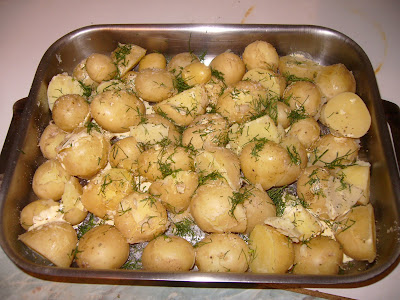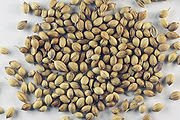 I’ve heard lots about Ginkgo and see it in many products on the supermarket shelves. It comes over and a herb that has many uses from shampoo to memory enhancing properties. Not having tried the nuts which is primarily a Chinese food I’m sure the play on the alternative medicinal benefits will still move up a step more and also on the vegetarian bandwagon.
I’ve heard lots about Ginkgo and see it in many products on the supermarket shelves. It comes over and a herb that has many uses from shampoo to memory enhancing properties. Not having tried the nuts which is primarily a Chinese food I’m sure the play on the alternative medicinal benefits will still move up a step more and also on the vegetarian bandwagon.Ginkgo is also known as the Maidenhair Tree after. It is one of the classic examples of a living fossil. For centuries the tree was thought to extinct in the wild, but it was found to be growing in Eastern China, These ginkgo trees may have been planted and preserved by Chinese monks over a period of about 1000 years.
Ginkgoes are big trees reaching a height of up to 50 metres. They have an angular crown and seemingly random branches. It is deep rooted to resist wind and snow. Autumn brings the leaves to bright yellow then drop within a few days so catching trees at this spectacular point is rare. Amazingly, some specimens are claimed to be more than 3,000 years old.
Ginkgo nuts are produced from the trees and are used and served up on special occasions such as weddings and the Chinese New Year. They are believed bring health benefit including aphrodisiac qualities. The Japanese cook Ginkgo seeds these are often eaten along with other dishes.
T
 he seed can cause poisoning to children if eaten in excess and some people are sensitive to the chemicals on the, the outer fleshy coating. They should handle the seeds with carefully when working with the seeds for food wearing disposable gloves is advisable. Dermatitis or blisters can result otherwise.
he seed can cause poisoning to children if eaten in excess and some people are sensitive to the chemicals on the, the outer fleshy coating. They should handle the seeds with carefully when working with the seeds for food wearing disposable gloves is advisable. Dermatitis or blisters can result otherwise.Extracts of Ginkgo leaves have been used pharmaceutically and Ginkgo supplements are a popular herb alternative medicine for treating dementia and prevention of Alzheimer's Disease. There is a medical debate on whether this is actually effective or not right now.
To me this is a food and whether the medical benefits are profound or not, it remains a natural source of protein and an addition to the daily intake of a varied and balanced diet. I certainly wouldn’t entertain importing the food from the point of unnecessary transportation. Every country has it’s own source of nut products and they should be eaten locally.


![Reblog this post [with Zemanta]](http://img.zemanta.com/reblog_b.png?x-id=39a84a52-a521-4972-a620-3b0b04100c45)


![Reblog this post [with Zemanta]](http://img.zemanta.com/reblog_b.png?x-id=b1551795-c7db-49f5-9c98-a3bbe07a1dae)


![Reblog this post [with Zemanta]](http://img.zemanta.com/reblog_b.png?x-id=b559d952-b1ee-4c99-a81c-c2b1e74180bf)


![Reblog this post [with Zemanta]](http://img.zemanta.com/reblog_b.png?x-id=2f26eb5c-6818-4af0-bcda-8dfcf341f084)